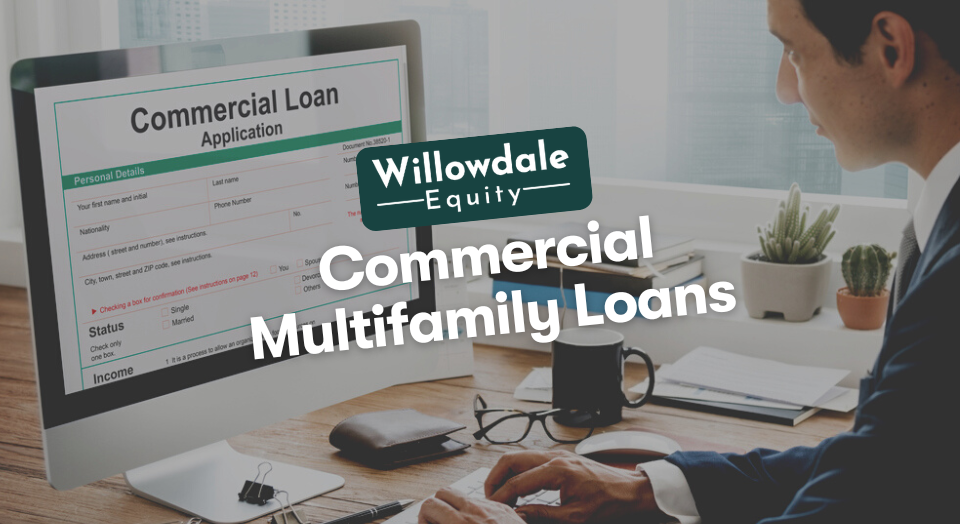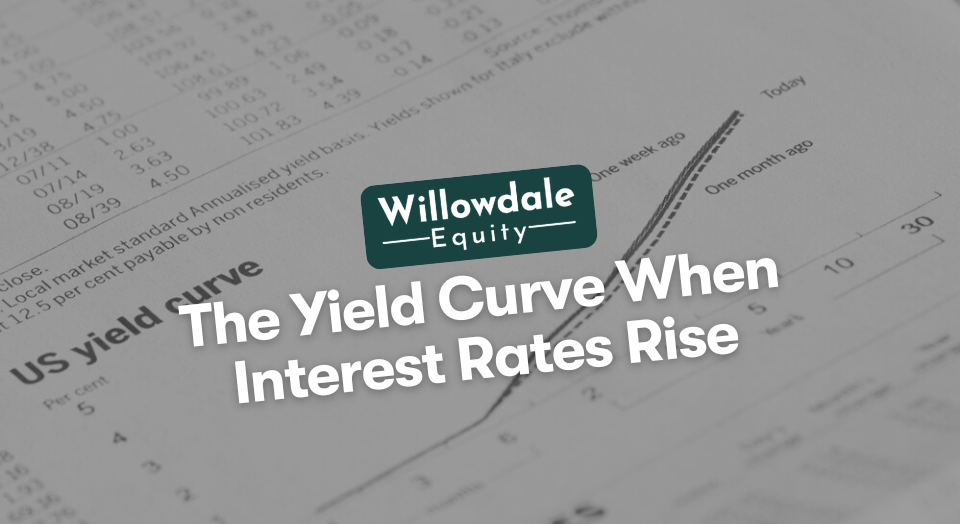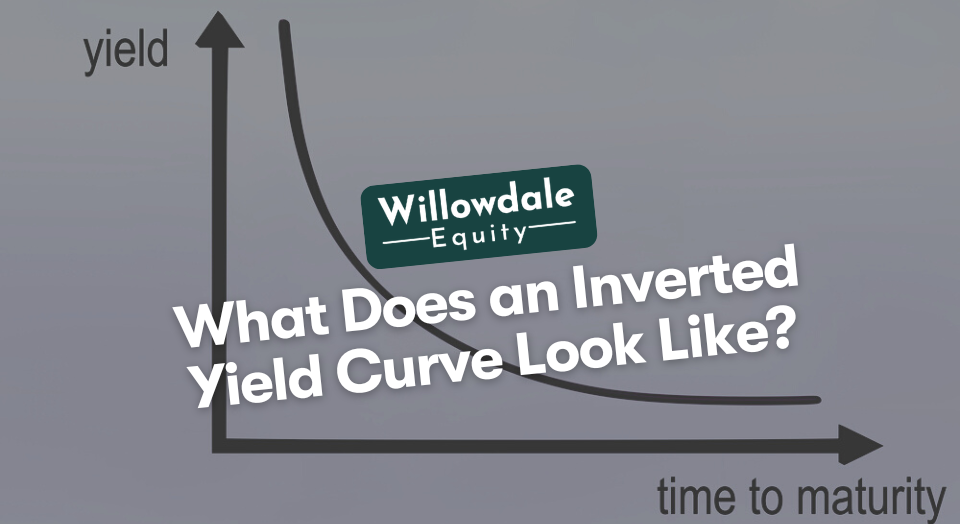
Commercial Multifamily Loans: The Apartment Financing Options You Should Know About
This article is part of our guide on fannie mae and non-recourse loans in multifamily, available here.
Unlike a traditional first-lien position mortgage for a single-family dwelling, commercial multifamily homes have more than five units. A multifamily property loan is one where a debt-based funding arrangement has been reached between a business and a financial institution.
The financial institution could be a bank or a private lender. Single private borrowers do not have the access needed to the bond and equity markets that a company does. This is because there will be more considerable upfront costs and regulatory hurdles that must be taken care of before closing. These businesses typically rely on lines of credit, unsecured loans, or term loans to cover these expenses.
This article will cover what multifamily financing options are available, how commercial real estate financing is obtained and processed, and the requirements for a down payment, credit, and debt servicing.
Key Takeaways
-
There are 7 types of commercial real estate loans available are HUD Loans, Fannie Mae, Freddie Mac SBL, Freddie Mac Conventional, Bridge Loans, Bank Loans, and CMBS Loans.
-
Most apartment properties are financed and mortgaged by either Fannie Mae (FNMA) or Freddie Mac (FHLMC).
Commercial Multifamily Loan Requirements
You must meet some guidelines and requirements to obtain a commercial multifamily loan. They include:
- The minimum loan size is $750,000
- These loans have a non-recourse feature. This means that personal assets are protected.
- There are 5 to 30-year fixed rate/term loans available
- All payments are based on a 30-year amortization
- No Debt to Income Ratios
- Minimum credit grade score of 680
- Your net worth must be at least equal to the loan amount you need
- You must have at least a 1.25 DSCR (Debt Service Coverage Ratio)
You must have a 90% occupancy rate within 90 days, and 35% of the space can be used for commercial space.
Typical Multifamily Loan Terms

The loan terms for a FNMA, Commercial Multifamily structure follow.
- $750,000 is the minimum amount loaned with no maximum
- 80% is the maximum LTV, or 75% if you want to cash out
- 5, 7, 10, 12, 15, 20, and up to 30-year fixed rate terms available.
- 30-year amortization period
- Interest Only Available
- Assumable with a 1.00% fee
- Non-recourse loans available
- Fannie Mae can do student housing
- Fannie Mae can also do independent senior living
- The net worth minimum is the size of the loan
- The minimum credit score needed is 680
- No Tax Returns Required
- The minimum DSCR is 1.25
- Post Closing Liquidity required is 9 – 12 months of mortgage payments
- The occupancy requirement is 90% for 90 days unless your financing with a bridge loan
- Fannie Mae allows up to 35% of commercial space. This would be for the mixed-use property.
- The prepayment penalty is yield maintenance or declining
- The loan is assumable
- There are affordable housing programs allowed
Most closings take anywhere from 30 to 90 days from the loan’s inception because Desktop Underwriting uses a scorecard to ensure both the borrower and lender comply with all current regulations and that the DSCR, credit, and LTV requirements have been met.
Apartment properties can be financed using FNMA or FHLMC. The lender you will be applying to MUST be DU compliant, and the investor cannot partner with FNMA or FHLMC.
How are most Apartment Properties Financed?
Most apartment properties are financed and mortgaged by either Fannie Mae (FNMA) or Freddie Mac (FHLMC). The funds are issued to borrowers via mortgages, bond credit enhancements, or credit enhancements. With FNMA and FHLMC, investors will allow after seasoning for one year to have subordinated secondary, tertiary, and quarternary loans after one year of seasoning per loan.
Commercial Mortgage Calculator
Below is a commercial mortgage calculator. Simply input the desired numbers and click “Calculate” to get a general idea of what your payment might be.
Why You Should Want an Interest Only Multifamily Loan
An interest-only (I/O) commercial loan is one where the investor pays the interest due monthly instead of principal and interest payments. This loan offers the real estate investor stronger cash flow and a more substantial Cash on Cash return.
The excess cash flow you take today due to having only to pay interest instead of both interest in principle is worth more today than it is worth tomorrow due to the natural erosion of the dollar, primarily due to inflation.
The Different Types of Multifamily Commercial Real Estate Loan Options Available
There are 7 types of loans available for commercial real estate, and they are:
- Fannie Mae
- Freddie Mac SBL
- Freddie Mac Conventional
- Bridge Loans
- Bank Loans
- CMBS Loans
- HUD Loans
Agency Loans are yet other types of loans that are available for the investor.
Agency Loans (Fannie Mae or Freddie Mac)
Some loans are issued by Fannie Mae and Freddie Mac for the commercial investor. They are classified as Fannie Mae non-recourse loans, Freddie Mac SBL, and Freddie Mac conventional loans. Fannie Mae loans are non-recourse loans. This means the borrower is not using his assets to cover a shortage in the collateral. The property must have an occupancy rate, of 90% for 90 days. These loans are offered in terms of 5,7,10,12 years, and all are amortized over 30 years. I/O payments are available from 1 to 5 years. Floating rates are available with the purchase of a rate cap.
Freddie Mac small balance loans are opened for new investors or investors. The loan is amortized over 30 years and the I/O payment availability is only 1 to 5 years. It must meet the standards of Fannie Mae for stabilization with an occupancy rate of 90% for no less than 90 days. The maximum LTV for a new purchase is 80%. There is a limited or no prepayment penalty.
Freddie Mac’s conventional loans are for loan amounts above $7.5 million. Like its’ cousin Fannie Mae, Freddie Mac conventional is also a non-recourse loan with terms much like those found with Freddie Mac SBL. The terms are 5, 7, or 10 years with I/O payments available for up to 5 years. It is amortized over 30 years and the maximum LTV is 80% for a new loan.
Occupancy stabilization must be no less than 90% for a minimum of 90 days. The borrowers must show they have experience owning and operating multifamily properties. Closings for an agency loan can be anywhere from 30 to 90 days. Another common type of loan for this transaction is a bridge loan.
Bridge Loans

Bridge loans have a term of generally 2-3 years with options to extend. Many borrowers will choose a 3-year term with the option of 2 extensions. This loan is not intended to be a permanent loan.
These loans are for investors with a large capital improvement budget tied to the project, allowing them to come in and add physical value in an effort to collect more income from the existing or future tenant base for its upgraded finishes, services, and amenities.
Also, these loans are mainly used for properties that require that “value-add” strategy, which may mean that the property is less than 90% occupied, which wouldn’t allow you to qualify for a Fannie Mae or Freddie Mac loan. These are non-recourse loans, and the I/O payment is available for the loan’s full term. The loan maximum LTV can go as high as 85% and would include the property’s rehab budget.
Bank Loans
This type of loan is a recourse loan, meaning that the investor has to guarantee using his assets if the collateral doesn’t cover the loan amount. These are loans with 1 to 2 years of I/O payment options. The DSCR will, as a consequence, be lower. The maximum LTV is 75% whether the borrower is refinancing or purchasing. These loans offer little to no prepayment penalties, which are an excellent vehicle for newcomers to invest.
CMBS Loans
CMBS loans are also known as conduit loans. CMBS is an acronym for the commercial mortgage-backed security. They are pooled with other similar loans, packaged into bonds, and then can be sold on the secondary market. The credit requirements are much more lenient than Agency loans, bank loans, or bridge loans.
They also feature fixed rate terms of 5,7 or 10 years. These loans are typically closed quickly because the current lien holder holds all the information for the conduit loan. Service managers handle securitization.
HUD Loans
Under Federal Housing Administration guidelines, multifamily home loans can be originated, processed, and closed only by FHA-approved lenders. This allows investors to handle the construction, rehabilitation, and acquisition of multifamily homes and apartments. The property must have been initially financed by a conventional loan or insured by the FHA. There must be at least 5 separate units, each with its’ own kitchen and bathroom and any rehabilitation must have taken place in the last 3 years. The maximum LTVs are:
- 90% – for Section 202 & 202/8 Direct Loans
- 87% – for projects with 90% or greater rental assistance
- 85% – for projects that meet the definition of Affordable Housing
- 83.3% – for market-rate projects
Closing for a HUD loan generally take longer to close, in some cases as long as 6 months. This causes issues for a new buyer of an apartment community as there’s a lower likelihood that the seller will allow such a lengthy close. As a result, many investors utilize these loans on a refinance because the borrower would have already owned the property and can sit there and wait 6 months for the loan to close.
Another creative way to utilize these high leverage, low-interest rate loans is by closing on the property cash and starting the refinance process immediately upon closing the property. The mortgage term cannot exceed 35 years or 75% of the estimated life of the physical improvements, whichever is less.
Frequently Asked Questions About Commercial Multifamily Loans
When the rents are paid, the mortgage or mortgages are paid as well as the rest of the expenses for maintenance, the net operating income is what remains.
The minimum credit score for a commercial loan is 680.
A multifamily bridge loan is a temporary loan. It is a more asset-based loan, allowing a borrower to close on a property that needs large capital improvements and potentially on a deal that is not stabilized (less than 90% occupancy).
Apartment Financing Options - Conclusion
Despite the uncertainty around the COVID-19 pandemic, many investors took advantage of the available financing options. These financing options allowed investors to purchase cash-flowing hard assets with true intrinsic value, allowing them to preserve capital, and secure a strong hedge against 40-year high inflation numbers that we’ve all experienced post-pandemic.
If you’re building long-term wealth through private equity illiquid tax-advantaged multifamily real estate across the south-eastern United States, join the investor club today here at Willowdale Equity.
Sources:
- U.S. Department of Housing and Urban Development, “Looking for FHA Multifamily Financing“
- CMBS.Loans, “Fixed-Rate, High Leverage, Non-Recourse Financing for Commercial Real Estate Investors“
- CCIM Institute, “Fannie Mae, and Freddie Mac Offer Options for Multifamily Investors
- FannieMae, “Updated Multifamily MBS Roadmap“
Interested In Learning More About PASSIVE Real Estate Investing In Multifamily Properties?
Get Access to the FREE 5 Day PASSIVE Real Estate Investing Crash Course.
In this video crash course, you’ll learn everything you need to know from A to Z
about passive investing in multifamily real estate.
We’ll cover topics like earned income vs passive income, the tax advantages, why multifamily, inflation, how syndications work, and much much more!




